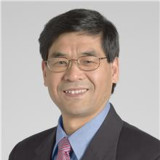
The American Academy of Pain Medicine (AAPM) 36th Annual Meeting discussed, reviewed, and critiqued the latest innovations and technologies available to pain specialists. One of the hot topics of the conference focused on the promise and reality of regenerative medicine in pain management. Regenerative medicine provides new hope for patients with refractory pain conditions by not only reducing pain as a symptom but also by modifying the disease processes that underlie the mechanisms of pain. However, there are conspicuous gaps between the current clinical practice and the science/clinical evidence for the application of regenerative medicine in pain management. These gaps were a focus of intensive debate and rigorous discussion in the conference.
Two sessions were devoted to this important topic. One highlighted this topic in the form of Pain Debate (207) and the other session (307) provided updates on state-of-the-art, as well as the promise and reality of, regenerative medicine in pain management. As a physician-scientist, I was privileged to participate in these sessions as a moderator and joined panels of internationally-recognized experts as a presenter. In the first session (Feb., 28), I was honored to debate with Dr. David Kennedy (Vanderbilt University) on “Regenerative Medicine Should Be Standard of Care in Pain Management,” moderated by Dr. Michael Leong (Stanford University). We debated the pros and cons and presented evidence, or the lack of it, to support incorporating regenerative medicine into the daily practice of pain management. In the second session, I was joined by Dr. Arnold Caplan (Case Western Reserve University) who pioneered the discovery, characterization, and clinical application of mesenchymal stem cells, and Dr. Wenchun Qu (Mayo Clinic), who is an expert on translational and clinical research of stem cells and other regenerative modalities.
Through these sessions, the participants were impressed with several key takeaways. Regenerative medicine is the branch of medicine that develops methods to regrow, repair, or replace damaged or diseased cells, organs, or tissues. Current regenerative pain therapies cover a wide range of treatments and technologies that may be split into two general categories: cellular products derived from bone marrow, adipose, umbilical cord, and other tissues, and blood-derived products such as platelet-rich plasma and autologous conditioned serum. There is accumulating evidence that supports specific treatment for specific indications in pain management, such as therapeutic applications in orthopedic surgeries, degenerative disc disease, osteoarthritis of the hip and knee, tendinitis, neuropathic pain due to nerve injury or nerve disorder, and opioid tolerance, among many other common conditions in pain medicine. A key mechanism of action of these therapies involves cellular and/or molecular signaling that functions to modulate the immune system, the inflammation processes, the trophic and reparative function, and/or the endocrine function.
It is further recognized in the discussion that there is still a wide gap between the promise and the reality of regenerative medicine in clinical practice that can only be bridged through basic scientific inquiry, translational investigation, and clinical outcomes research. Clinical efficacy, patient safety, and cost-effectiveness are among the main considerations during further development of regenerative medicine as an emerging and promising therapy for patients with a wide range of acute or chronic pain conditions. Rigorously designed, adequately powered, and well-conducted clinical trials are particularly needed to advance regenerative medicine treatment modalities in pain management. Relevant handouts and recordings will be made available at the AAPM website for those who may be interested in looking into this topic more closely.
Jianguo Cheng, MD, PhD is a Professor and Director at Cleveland Clinic Multidisciplinary Pain Medicine Fellowship Program. He is also the Immediate Past President of American Academy of Pain Medicine.







